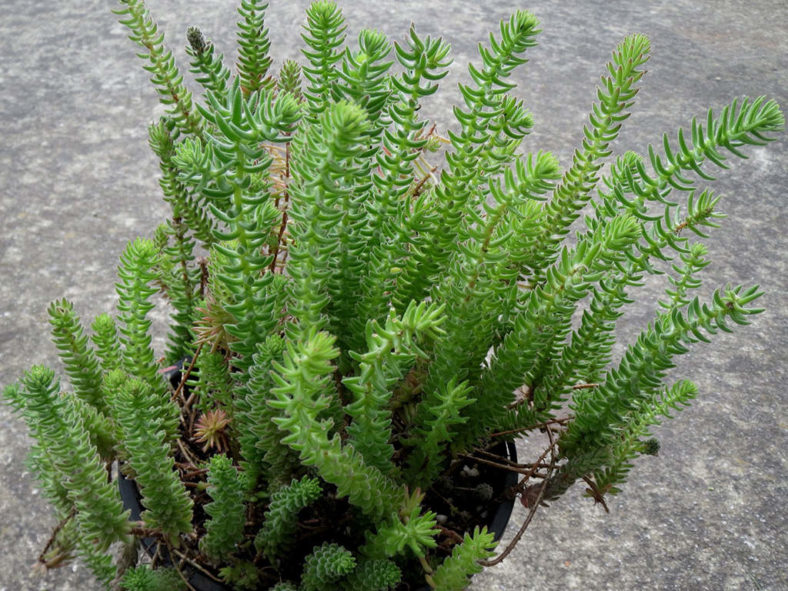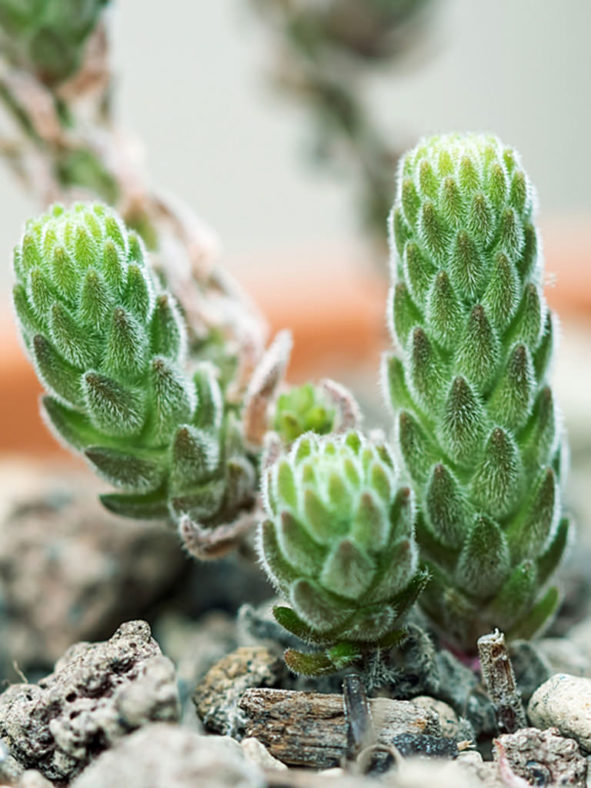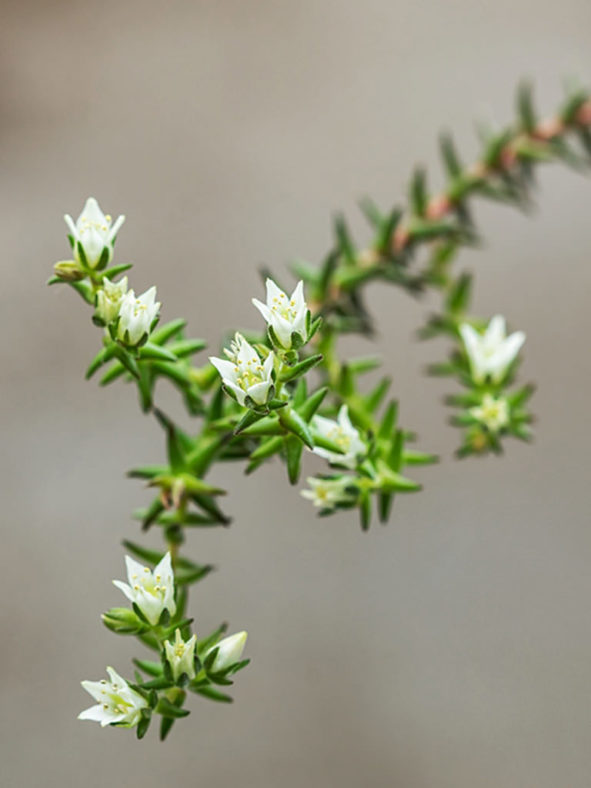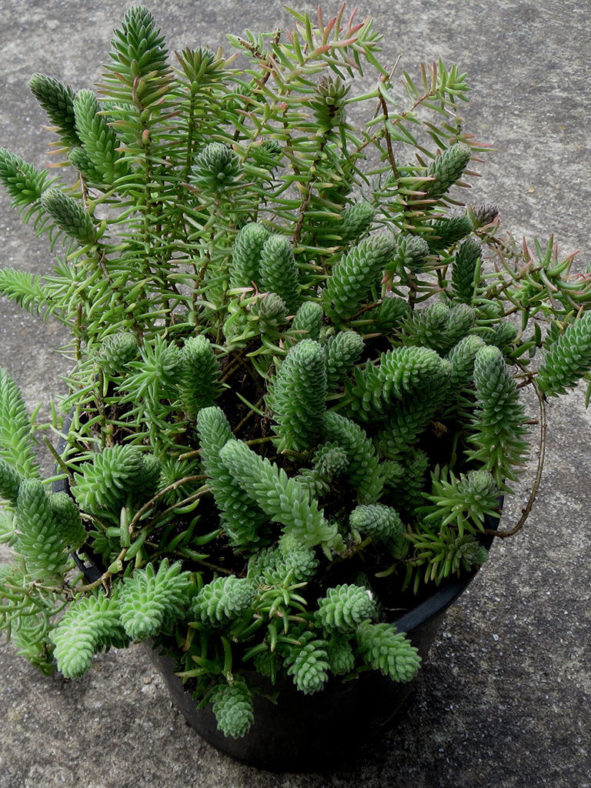Scientific Name
Sedum jurgensenii (Hemsl.) Moran
Synonym(s)
Altamiranoa elongata var. jurgensenii, Altamiranoa jurgensenii, Cotyledon jurgensenii, Sedum jurgensenii subsp. jurgensenii, Villadia jurgensenii
Scientific Classification
Family: Crassulaceae
Subfamily: Sempervivoideae
Tribe: Sedeae
Genus: Sedum
Etymology
The specific epithet "jurgensenii (joor-GEN-see-nee-eye)" honors Mr. C. Jürgensen (fl. 1840), a German plant collector in Mexico and Paraguay.
Origin
Sedum jurgensenii is native to Mexico. It grows on rocky slopes and cliffs at elevations ranging from 3,600 to 9,500 feet (1,100 to 2,900 m).
Description
Sedum jurgensenii is a small succulent shrub with a woody base and erect to trailing flowering branches that root where they touch the ground. The branches can grow up to 28 inches (70 cm) long. The leaves are light green, lance-shaped, measuring up to 0.6 inches (1.5 cm) long and about 0.1 inches (0.3 cm) in diameter. They are covered with stiff, short hairs.
The white flowers are star-shaped and appear in clusters at the tip of the stems from summer to fall.

How to Grow and Care for Sedum jurgensenii
Light: This succulent grows best in locations where it will enjoy the full sun for at least six hours daily. It will tolerate partial shade but will not thrive in deep shade. Keep your indoor plant in a sunny window or under artificial lights.
Soil: S. jurgensenii does not like to sit in waterlogged soil, so drainage is essential to prevent root rot. Choose a well-draining soil mix.
Hardiness: This plant is tolerant of heat and freezing temperatures. S. jurgensenii can withstand temperatures as low as 0 to 40 °F (-17.8 to 4.4 °C), USDA hardiness zones 7a to 10b.
Watering: From spring through fall, water thoroughly and wait for the soil to dry out before watering again. In winter, water the plant just enough to keep it from shriveling. Avoid wetting the leaves, stems, and flowers when watering.
Fertilizing: Feed with a balanced organic fertilizer in spring. Feeding is unnecessary as the plant is divided annually and provided with fresh soil.
Repotting: Repot your plant when it outgrows its current pot by moving it out to a larger container to hold the plant better. Spring is the best time to repot S. jurgensenii. Make sure the soil is dry before you begin repotting.
Propagation: Once you have one S. jurgensenii, it is easy to make more by taking stems or leaf cuttings and dividing the plant. It is also easy to grow from seed. Take cuttings in spring when the plant is in active growth. Once it has finished flowering, it is the right time for division. Spring or summer is the best time to sow the seeds.
Learn more at How to Grow and Care for Sedum.
Toxicity of Sedum jurgensenii
S. jurgensenii is not listed as toxic for people but can be mildly toxic to pets and children.
Links
- Back to genus Sedum
- Succupedia: Browse succulents by Scientific Name, Common Name, Genus, Family, USDA Hardiness Zone, Origin, or cacti by Genus
Photo Gallery
Click on a photo to see a larger version.


